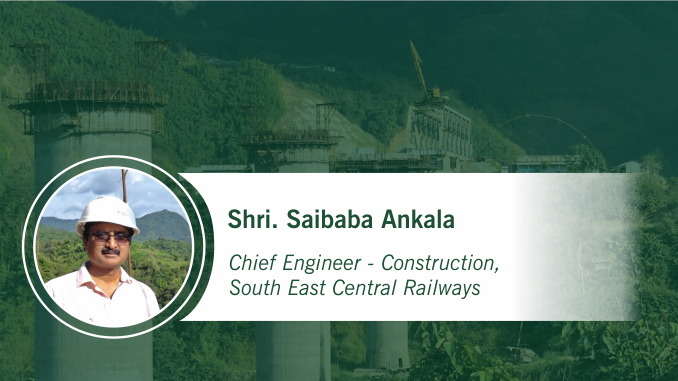
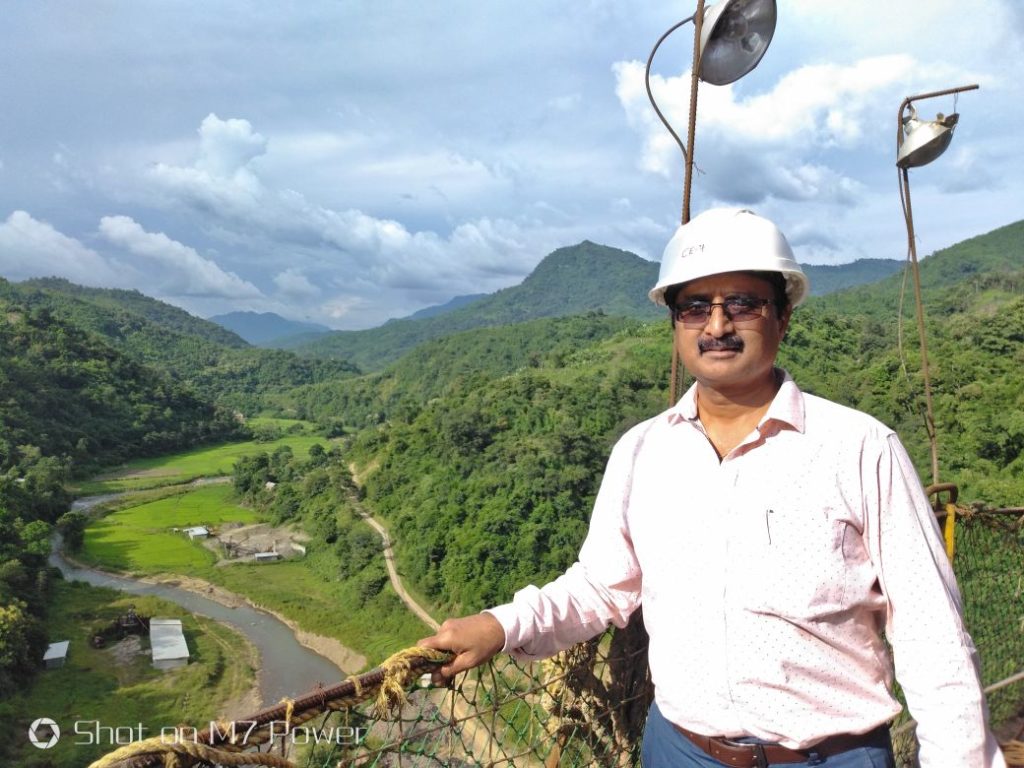
Mr. Saibaba Ankala,
Chief Engineer – Construction, South East Central Railways
Rail Analysis: Please tell us more about yourself and how did get started in the railway industry? How was your journey so far and what type of challenges you faced in the beginning and how you overcome from them?
Mr. Saibaba Ankala: I got selected in Group-A service of Indian Railways (IRSE-Indian Railway Service of Engineers) by topping in the Indian Engineering Services examination held by UPSC, in the year 1989.

With Railway Minister, explaining the concept of eco innovation developed by Saibaba
In a highly successful tenure of over 30years so far, I had the opportunity of associating in execution and maintenance of several national and international rail projects, major bridge projects and metro rail projects. I gained expertise in various aspects of railway, metro and major bridge projects- right from planning to design, estimating, construction and commissioning.
On the O&M front, I had the opportunity of heading the track and bridge departments of major railway zones where I gained expertise in modern techniques of asset monitoring and maintenance like Structural Health Monitoring by instrumentation, database software like track management system and bridge management system.
“Recently as Chief Engineer / Construction, I headed a Mega Rail Project in the Northeast costing INR 14,000 Cr where, apart from 66 km of tunnels and over 125 bridges, I had the unique distinction of designing and constructing the world’s tallest rail bridge”
Rail Analysis: Tell us more about the major railway and metro projects you have worked for?
Mr. Saibaba Ankala: I have so far worked for 24 major railway projects involving new line construction, doubling, gauge conversion and third line construction.
The railway projects involved construction of embankments, major bridges, long tunnels , buildings, sheds and laying of high speed railway tracks with modern techniques! I was involved in very challenging projects in all parts of India, from West (Goa, Karnataka) to East (Manipur) under contrasting climatic, social and environmental conditions!

Panoramic view from top of the bridge
I was involved in construction of several major bridge projects including the first cable-stayed bridge in Bangalore, steel and PSC bridges across mighty rivers and Complex Road over bridges for 8-lane expressways and NHs. Each location has got unique set of issues and required specific techniques for construction and launching.
The expertise developed during the course of execution of the above projects has been carefully documented and show-cased in various national and international conferences. I have received appreciation and awards at various levels for my contribution towards technical expertise and cost-efficient construction ! I was involved in two metro rail projects of Bangalore and Hyderabad. In Bangalore I was associated in the initial comprehensive planning of the viaducts, tunnels, stations and depots and contributed to optimization by value engineering.
In Hyderabad the role was “Advisor -Systems Integration” involved right from planning to construction and commissioning.The main challenge was to develop a construction scheme compatible with the traffic pattern of the busy roads duly ensuring safety and sustainability !
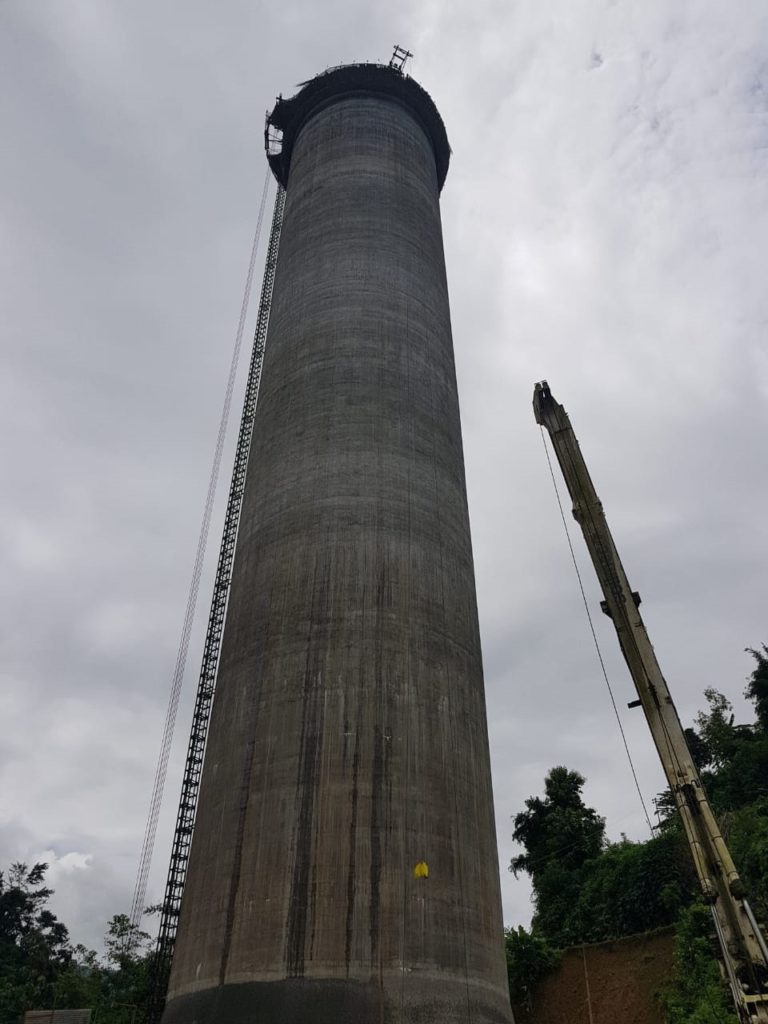
Pier during construction
In both projects, I was instrumental in developing cost-effective construction techniques duly co-ordinating with nearly 6 major systems for a trouble-free construction!
Presently I am pursuing my PhD (doctorate) program from IIT, Guwahati in the field of Infrastructure Management specializing in sustainable mega projects like metro and high speed rail! The knowledge acquired through PhD also enabled me to contribute to the Manipur project in promoting sustainability and value engineering !
Rail Analysis: Please share your experience of working for World’s Tallest Rail bridge in Manipur? What type of major challenges being faced in the construction of any rail bridge project in India?
Mr. Saibaba Ankala: The World’s tallest bridge was my dream project! With dedicated efforts, we could complete the tallest pier to set a new world record! It is a life-time achievement for me and I am thankful to my entire team of engineers, consultants and contractors, who made it a reality!
As part of rail connectivity to Imphal, capital of Manipur state in Northeast India, a 111km long new railway line is constructed cutting across the south Shivalik mountain ranges. The undulating nature of the terrain necessitates series of tunnels and viaducts. One of the viaducts is across a deep ravine of the river Ijai near Noney. The height of the pier (pillar) is 141m, which surpassed the earlier world record of 139m in Europe !
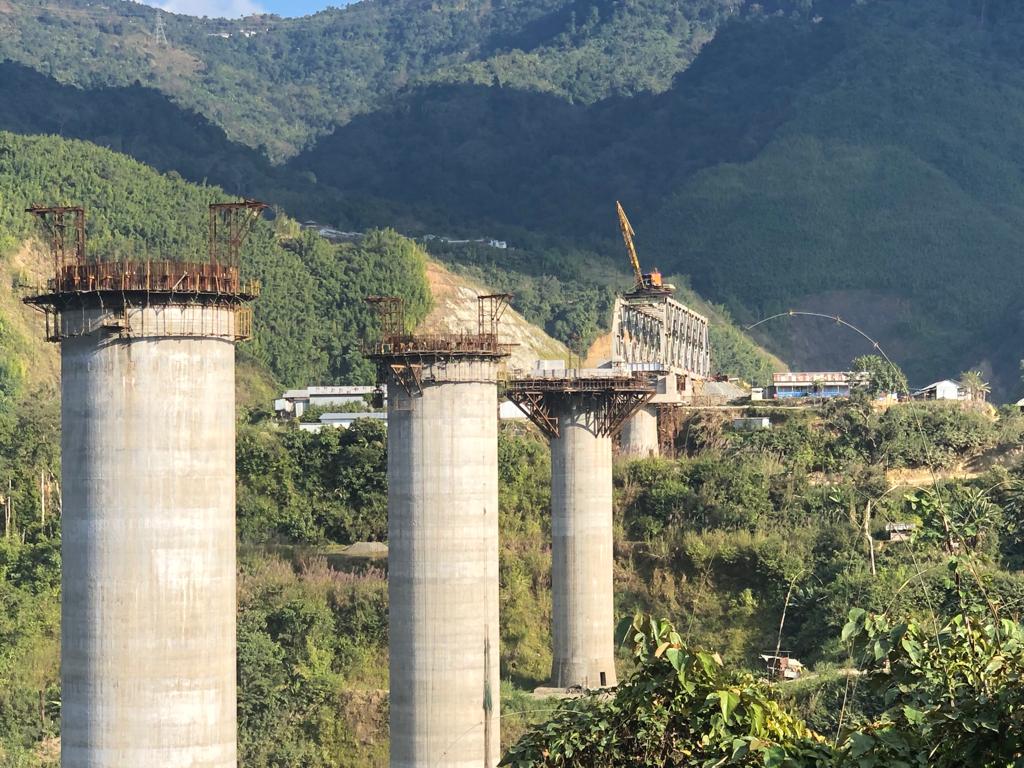
View of the World’s Tallest Railway Bridge in Manipur under construction
Technical Challenges: The bridge site is located in Seismic zone-V (most severe earthquake zone of India). In addition, there are high winds and heavy rains, being hilly area. Hence the bridge is to be designed to withstand these vagaries of weather and safely pass the trains atleast for the next 100 years!
Other Challenges: Remoteness of the site posed a major challenge on logistics, as the most of the material is to be transported from far away locations in different states. Besides ensuring minimal damage to environment and local people is a very delicate issue and to be dealt with utmost care and concern.
The challenge of law and order and militancy are effectively tackled with the support of the State Government!
“Today the Bridge is standing tall as a world record monument and a testimony to our technical expertise and dedicated efforts to make it a reality amid several challenges . Innovative sustainability measures have been taken by us in promoting eco-friendly construction, local cultural Heritage through tourism and CSR activities”
Sustainability measures: In order to make the bridge a safe and sustainable structure, we had introduced following novel concepts :
- We have adopted the latest concepts and state-of-the-art technology in the design and construction! Three different IITs were associated in formulating the design process apart from our in-house design expertise!
- I have developed an eco-innovative concept of “Soil-Cement Blocks”, where the surplus soil, instead of simply disposing in the open contaminating the water, is utilised for making bricks and these bricks are reused in the site! By this a saving of over Rs100cr is envisaged, besides contributing to environment protection and local employment!
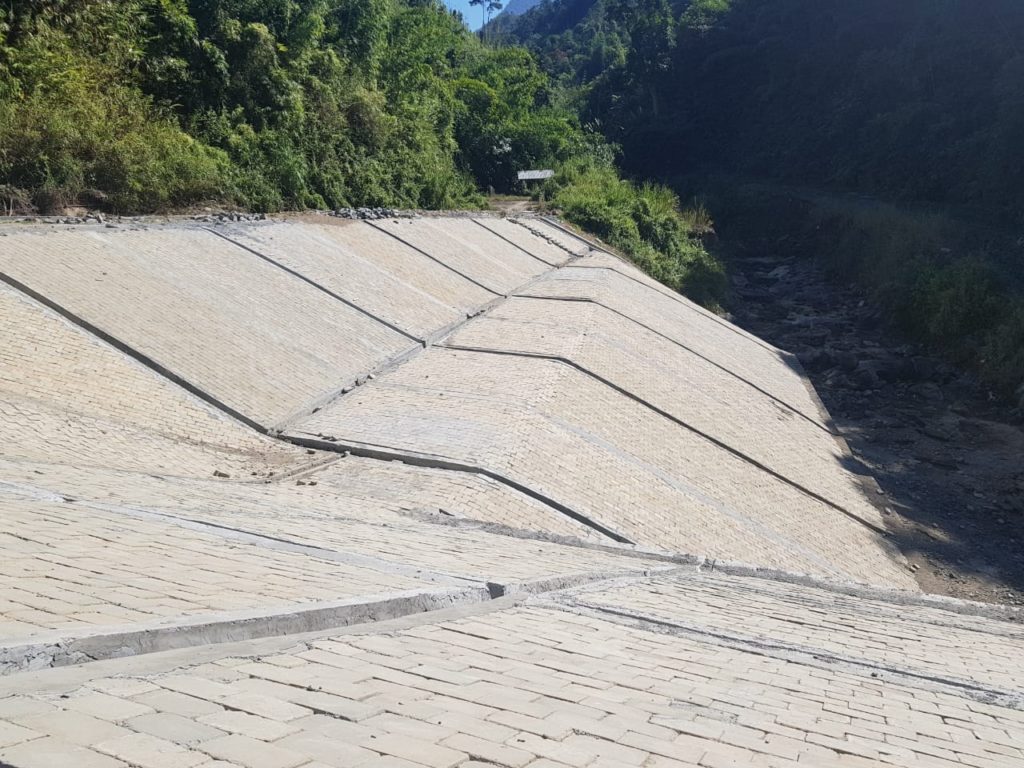
Surface protection with Soil-Cement blocks
- Another sustainability concept proposed is to develop the bridge site as a World Tourist Spot as it is an attraction not only for its technical splendour but also for the scenic beauty and rich local heritage it commands! I have conceived the idea of “Eco-tourism” by home-stay concept involving the local villagers, making it a WIN-WIN situation! The concepts were well-appreciated by Railway Board, Hon’ble CM of Manipur as well as Hon’ble MoSR!
- Fossil Museum: During the course of execution, several rare fossils have been unearthed. It is proposed to show-case these fossils by putting them in a museum near the tourist spot!
“Apart from construction phase, safety provisions shall cover the service condition as well to ensure health and safety of consumers and public”
Rail Analysis: What according to you are the safety measures that should be considered while constructing any bridge project for railways and metro?
Mr. Saibaba Ankala: Safety is of paramount importance not only for railways or metros but any project! Safety Team shall comprise of well-trained and qualified professionals, who work independently and report directly to the top management.
Besides initial orientation and training courses, regular on-the-job refresher courses are must! Checking the health, attitude and awareness of the staff on regular basis is of paramount importance While penalising unsafe practices, system should also encourage by awarding safety-abiding and innovations!
The training shall not be generic but cover the key-aspects specific to the activity! For instance, bridge projects working at heights demand a set of safety norms as well as health conditions!
Specifically in case of metro bridges, safety shall encompass not only the safe working of staff and equipment but also the safety of the public, building and other assets, where a careful scientific pre-survey and detailed study are required to adopt the safety strategy!

